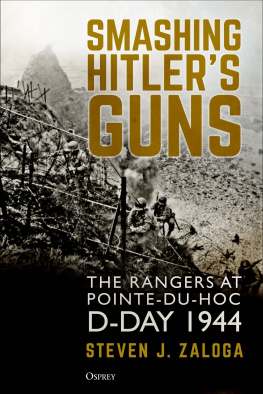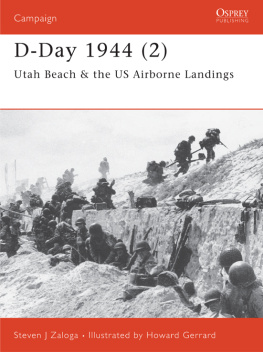KNIGHTS MOVE
The Hunt for Marshal Tito 1944
DAVID GREENTREE
CONTENTS
INTRODUCTION

In the early morning of 25 May 1944 Tito heard the screeching engines of two fighter aircraft tearing down the valley. He rushed out of his office a small wooden shack built at the entrance of a cave that nestled into an escarpment overlooking the small town of Drvar in north-western Bosnia to see Junkers 87 Stuka dive-bombers bank into a dive and plummet earthward to deliver their high-explosive ordnance onto houses in the town. Three days before, after a German Fieseler Storch aircraft had been seen flying over Drvar, the British military mission to his headquarters advised that a German aerial attack was imminent. Since 1941, to avoid the merciless fate German policy dictated for partisans, Tito had kept his men constantly on the move. In June 1943 he had a narrow escape after a German bomb killed many of his entourage; however, in November he felt secure enough to stop running, and established a new socialist government for Yugoslavia at Jajce in Bosnia. Paradoxically, the success of his movement made him more vulnerable than ever. German agents had discovered his new location and an offensive was launched to destroy his headquarters. As Tito continued to watch the aircraft twist and turn he noticed slower, straight-winged planes start to descend and out of others small, mushrooming flecks of white appear. The centrepiece of the attack, codenamed Rsselsprung (Knights Move), was a daring glider and parachute assault, which could have only one purpose to kill or capture him before he could make good an escape.
The German paratroopers that occupied those gliders and who were parachuting down into the heart of partisan power were members of the recently formed 500th SS Parachute Battalion. German Army Group F commander Generalfeldmarschall von Weichs, commander-in-chief for the Balkans, entrusted their commander Hauptsturmfhrer Rybka with this mission critical task. Many recruits to his unit were SS soldiers who had been punished for some misdemeanour and demoted, and success in this highly dangerous endeavour could lead to a restoration of rank and standing. However, they were being dropped into a cauldron, with the expectation that partisans would flood the area from all sides in an attempt to overwhelm them. Rybka and his men would have to rely on ground units from Generaloberst Rendulics 2nd Panzer Army to reach them before this happened.
Many of the paratroopers would have felt apprehensive during their approach to Drvar. Not only were they about to descend behind enemy lines, but they were also entering an unforgiving, inhospitable environment where both sides gave no quarter. In the 1920s and 30s the Serbian-dominated Yugoslavian government had done nothing to mollify ethnic rivalries that had long endured in the Balkans. In April 1941 military defeat by Germany heralded the arrival of an extreme Croatian regime in Zagreb, whose agenda was the expulsion, absorption or destruction of the Serbian people. Add to this a brutal German occupation policy that viewed resistance or assistance to those that did as punishable by death, as well as a racial intolerance that viewed Slavs as inferior, and an environment was created in which the fighting was often savage and unrelenting. If the operation did not unfold as planned, the SS paratroopers would be threatened with annihilation, but for von Weichs the prize was worth the risk and Himmler, keen to bask in the reflected glow of victories won by his men, authorized their use.
The operation was not embarked upon lightly. The plan could succeed only if the intelligence upon which it was founded was accurate and in Yugoslavia there was a rich vein of potential betrayers to provide human intelligence, potentially the most exploitable. Agent handlers from the Abwehr (German military intelligence) and from October 1943, men from the Brandenburg Regiment had been operating clandestinely among the local population. In March 1944 their sources told them Tito was in Drvar. The following month Hitler intervened and, impressed with Sturmbannfhrer Skorzenys role in rescuing Mussolini from Gran Sasso mountaintop, sent the SS officer to hunt Tito down. Skorzeny was the leader of the SS Friedenthal Battalion theoretically an elite unit established for operations behind enemy lines. The ability to properly utilize intelligence provided by the Brandenburgers and Skorzeny, as well as imagery and signals intercepts, would heavily influence the fate of the paratroopers, the partisans that rushed to Titos aid, and Tito himself.

Tito, far right, wearing marshals uniform, poses for a British Army photographer in April 1944, part of a group of Allied journalists sent to his headquarters in Drvar. He is alongside some of his closest advisers, including his bespectacled intellectual mentor Kardelj. A cave overlooking the town was being used because of the threat from aerial bombardment. (Imperial War Museum, NA 15129)
The German operation can be seen either as a last, desperate gamble, a final throw of the dice for the German High Command that routinely committed over 20 Axis divisions to combat the growing partisan movement and now launched a last-ditch attempt to stymie it, or a long-overdue example of traditional Blitzkrieg to remove at one stroke its talismanic leader. Originally invaded by Hitler to protect the rear of the army as it stormed into Russia, many areas of Yugoslavia, in particular the territories of Bosnia-Herzegovina and Montenegro, had become ungovernable, despite the establishment of puppet regimes in Serbia and Croatia, the involvement of Italian and Bulgarian occupation troops to quell resistance, and the collaboration of Serbian Chetnik partisans. In early 1944, as the German army retreated from the Ukraine, guaranteeing communications in Yugoslavia was a top priority for von Weichs, but the resources available to him were dwindling. German formations were being sent to the Italian and Eastern Fronts, many Italian soldiers had joined the partisans after that countrys capitulation in September 1943, and Italian weapons were being used to arm more partisan recruits. The encirclement of Titos mobile formations had been attempted many times but Tito had always found a way of escaping. Weichs hoped a lightning strike at his headquarters would remove their inspirational leader, who he described as his most dangerous enemy, and deliver a mortal blow to the partisan movement.

Parachutists from the newly formed 500th SS Parachute Battalion collect their thoughts on the approach to Drvar whilst being transported in a Ju-52. This was their first operational jump and would be conducted into the heart of partisan territory. War correspondents including photographers were sent on the mission to exploit the presumed propaganda opportunity. (Slovenian Museum of Contemporary History)
Yugoslavia was also high on Churchills list of priorities. Tito had long competed for arms from the allies with Mihailovic, the leader of the Serbian Chetniks and loyal follower of the Serbian King of Yugoslavia. In September 1943 Churchill dispatched one-star led military missions to the headquarters of both groups to assess their commitment to fight the occupiers. By November it was clear that the Chetniks were collaborating with the Nazis and that only Tito offered a real prospect of unhinging the German rear areas. Accusations made by the Soviets after the war that Britain purposely withheld intelligence derived from signals intercepts that pointed to the German airborne attack are groundless. America may have preferred to see Chetniks rather than communists in power after the war, but Churchills policy to give Tito all the military supplies he wanted was adopted. He was also keen on landing an expeditionary force on the Dalmatian coast. Fitzroy MacLean, the British head of mission, made a reconnaissance of the area in December 1943. In May 1944 he was not in Drvar; however, others, including Major Randolph Churchill (the prime ministers son) and Major Vivian Street, were present, as were American and Soviet missions. When the Germans dropped from the sky the worlds attention turned towards the town, as the outcome of the German attack could have consequences not only for the present strategic situation in the country, but also for its post-war political landscape.

















